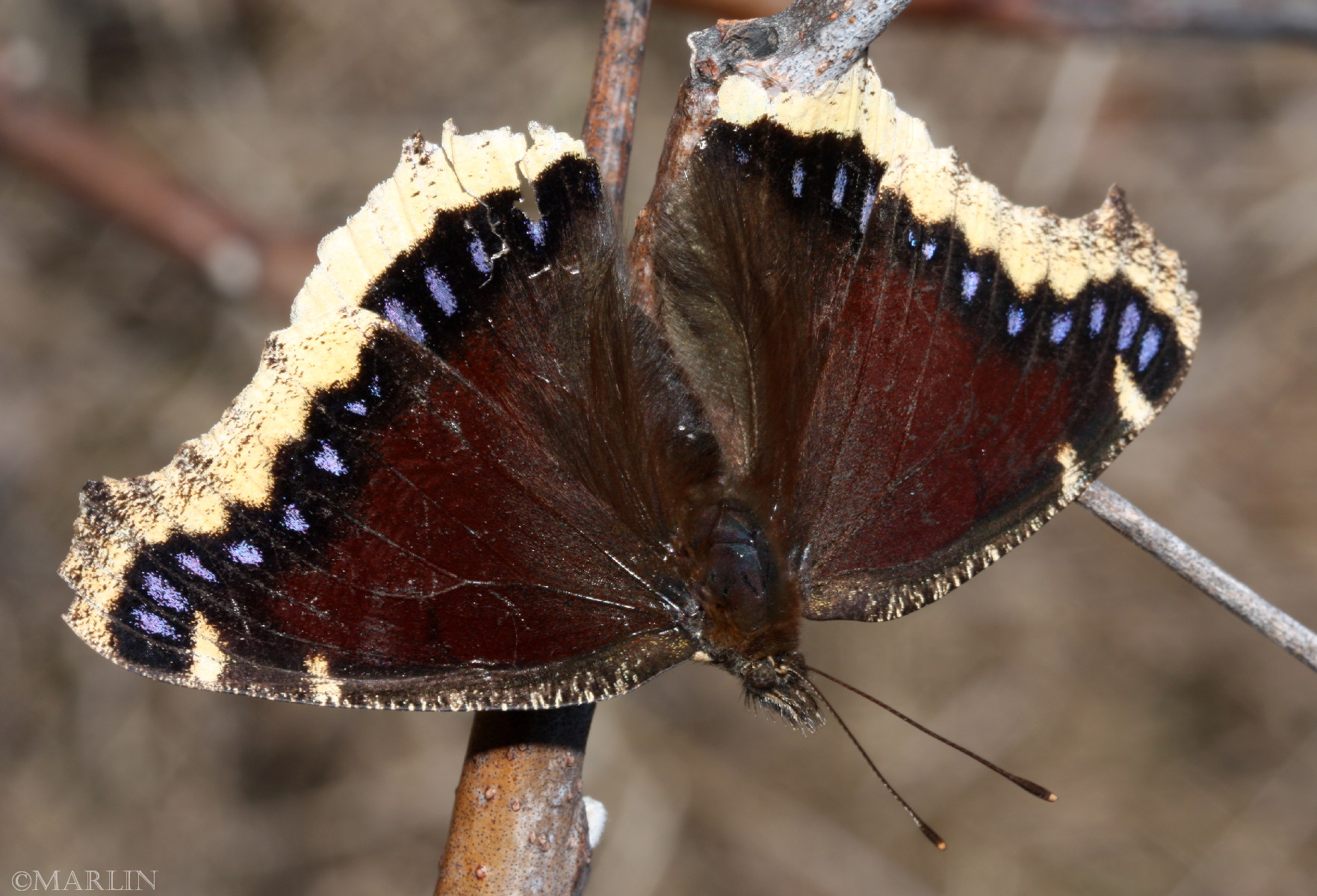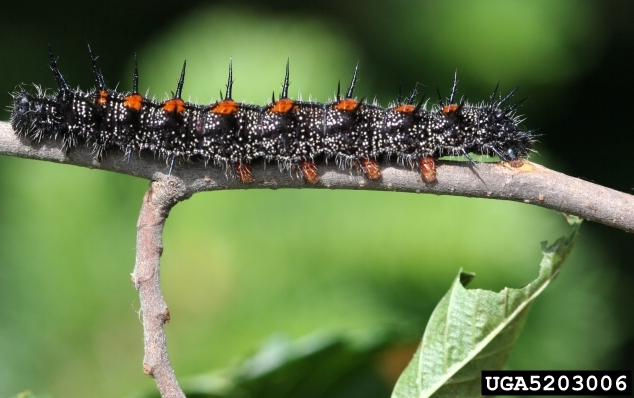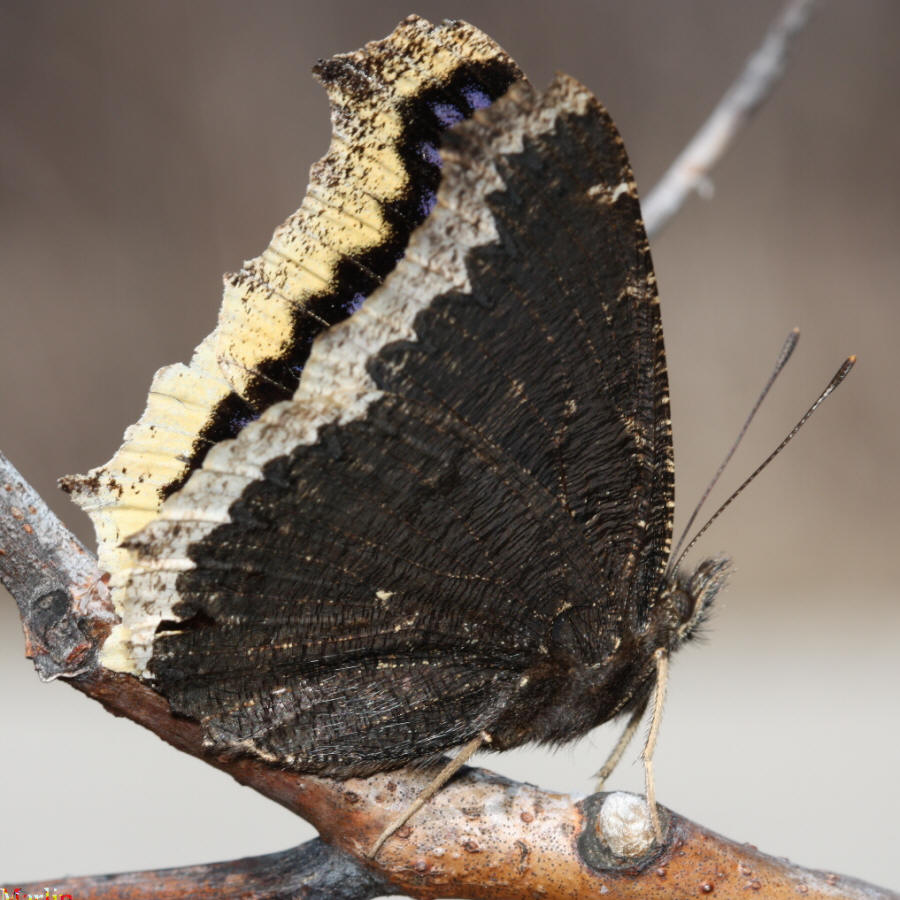Mourning Cloak Butterfly – Nymphalis antiopa

Early spring: overwintered specimen wakes up
Hodges#4432 Live adult butterflies photographed in the wild at Winfield and West Chicago, Illinois.
The common name for this species refers to its resemblance to a traditional cloak worn when one was mourning the death of a loved one. The scientific name is derived from both Latin and Greek; Latin: Nymphalis – of, or pertaining to a fountain, Greek: Antiopa – wife of Lycus, King of Thebes. It may appear in these photos that this butterfly only has four legs, but this is not the case – it has six, only the front pair are greatly reduced, appearing hairy and brush like. This is the reason members of this family, the Nymphalidae, are commonly known as “brush-footed butterflies”.
The species is only rarely found in Great Britain. The Brits call it “Camberwell Beauty,” as it was first discovered near Camberwell in the 1700s. Another old name was “Grand Surprise”. The Mourning Cloak was adopted as the state butterfly of the State of Montana in 2001.
Mourning cloaks are some of the very few butterflies that can survive our winters here in the American Midwest. This specimen has awakened from its winter diapause and is tapping an energy source, tree sap, which is available before any of the usual suspects have started operations. Overwintered specimens have a tattered, been-through-the-wars look I greatly admire. As summer approaches, one rarely sees the new generation, as their frenetic activities carry them high into the forest canopy; many’s the time I’ve spied them patrolling lofty places amidst the trees, sailing and darting about looking for rivals and mates.

The larval stage of the mourning cloak is commonly called the spiny elm caterpillar. The caterpillars are purplish-black with white specks and a row of orange to red spots along the back with branched spines circling the body (below), and ultimately grow to 2 inches long at maturity.
References
- Bugguide.net, Mourning Cloak
- National Audubon Society Field Guide to Insects & Spiders (North America), Chanticleer Press 1980
- Eric Eaton & Ken Kaufman, Kaufman Field Guide to Insects of North America, Hillstar Editions 2007
- Arthur Evans, National Wildlife Federation Guide to Insects & Spiders of North America
Butterfly Pictures | Butterfly Index | Moth Pictures | Moths Index | Skipper Butterflies
Tree Encyclopedia / North American Insects & Spiders is dedicated to providing family-friendly educational
resources for our friends around the world through large images and macro photographs of flora and fauna.

